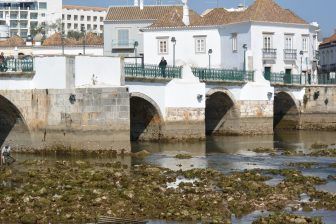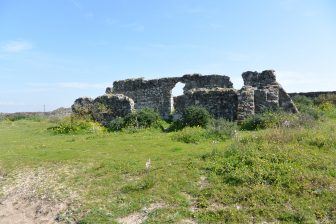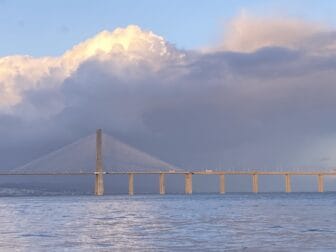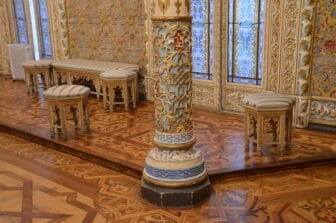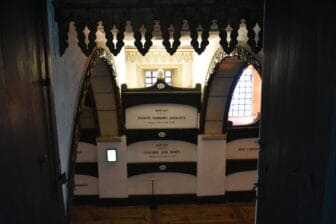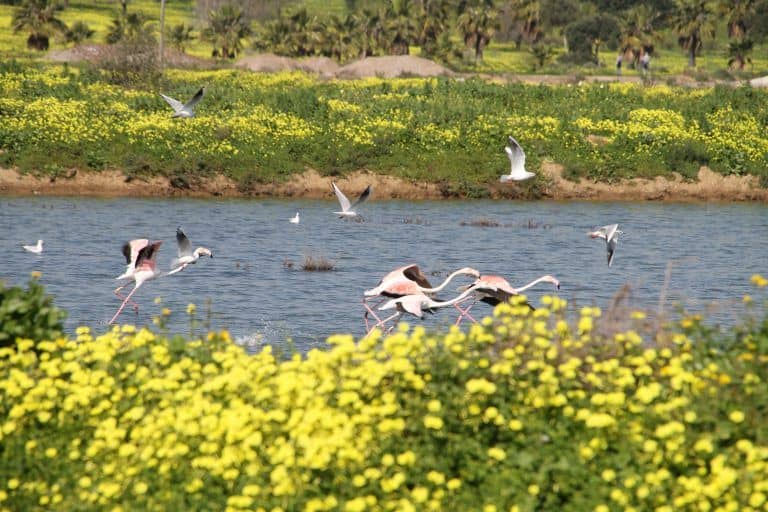
[ Feb.2017 ] After enjoying shopping in Tavira in Portugal, we continued walking in the town.
Going towards Gilao River, we came to Praca da Repubulica.
Apparently in the past they traded slaves here.
The bridge from this square to the other side of the river is the Ponte Romana.
Originally it must have been built by Romans, but the current one was rebuilt in the 17th century.
Also more recently in 1989, they repaired the damage caused by floods.
When we crossed this bridge, we found a bright yellow and orange car at the end.
It was not exactly a car in fact, but it was a tuk-tuk made from a motor cycle for sightseeing tours for tourists.
In an instant we decided to take it.
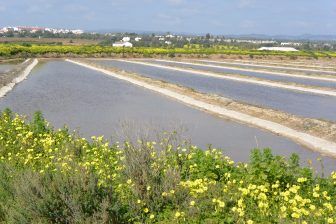
The driver, Tiago was a 33 year old father of a son of 6 years old and expecting a second baby soon.
He used to work in Lisbon, but got fed up with the busy city life and came back to this town.
This bright tuk-tuk was brand-new and he started using it only 2 weeks ago.
We went out of the town into a vast salt pan area.
We saw some whitish mountains of salt here and there.
There were many yellow flowers blooming and the colour contrast with the blue sky was very nice and I was forgetting it was the middle of winter in February.
In fact, the people in our hotel, mainly British and German were all wearing summer clothes.
Tiago stopped the tuk-tuk at the ruin of the 16th century fortress and we looked out the view from there.
According to him, soon after they built this fortress, the tide changed and they had to make another fortress in the different place, so this one was used only for a few years.
After that, we went into middle of the salt pan area by the tuk-tuk.
Tiago told us that this was the national park and the ordinary cars were not allowed to get in there but only vehicles with a permit could go.
Here we saw a group of flamingos.
The flamingos we usually imagine are pink, but these ones were white when they were just standing.
And when they flew, we saw the pink part on their wing.
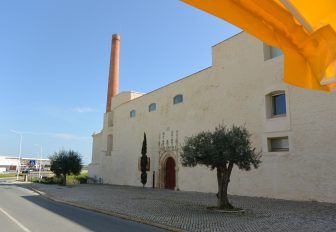
We saw a few buildings which used to be the factories of tinned tuna.
At the end of the 19th century, they caught as many as 40000 tunas a year here, but in 1970s the number became just one a year, so the industry died down.
Now some of those buildings were upmarket hotels and others were discos.

